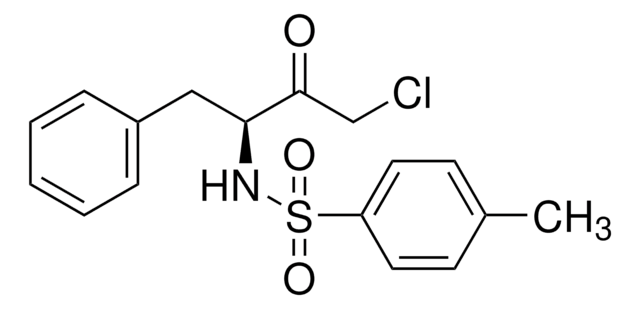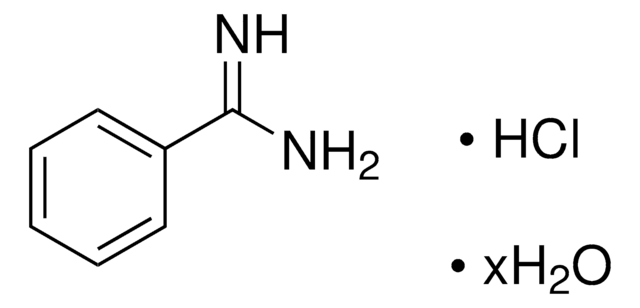52332
Phenylmethylsulfonyl Fluoride
Phenylmethylsulfonyl Fluoride, CAS 329-98-6, is an irreversible inhibitor of serine proteases. It causes sulfonylation of the active-site serine residues.
Sinónimos:
Phenylmethylsulfonyl Fluoride, Benzylsulfonyl Fluoride, PMSF
About This Item
Productos recomendados
Nivel de calidad
descripción
RTECS - XT8040000
Ensayo
≥99% (GC)
Formulario
crystalline solid
fabricante / nombre comercial
Calbiochem®
condiciones de almacenamiento
OK to freeze
desiccated
color
white to off-white
solubilidad
ethanol: soluble
isopropanol: soluble
methanol: soluble
Condiciones de envío
ambient
temp. de almacenamiento
10-30°C
cadena SMILES
F[S](=O)(=O)Cc1ccccc1
InChI
1S/C7H7FO2S/c8-11(9,10)6-7-4-2-1-3-5-7/h1-5H,6H2
Clave InChI
YBYRMVIVWMBXKQ-UHFFFAOYSA-N
Descripción general
Acciones bioquímicas o fisiológicas
serine proteases
Advertencia
Reconstitución
Otras notas
Weaver, V.M., et al. 1993. Biochem. Cell. Biol.71, 488.
Bourgain, R.H., et al. 1992. Adv. Exp. Med. Biol.316, 427.
Chang, C.T., et al. 1992. Biochem. Int.28, 707.
Información legal
Palabra de señalización
Danger
Frases de peligro
Consejos de prudencia
Clasificaciones de peligro
Acute Tox. 3 Oral - Skin Corr. 1B
Código de clase de almacenamiento
6.1A - Combustible acute toxic Cat. 1 and 2 / very toxic hazardous materials
Clase de riesgo para el agua (WGK)
WGK 3
Punto de inflamabilidad (°F)
Not applicable
Punto de inflamabilidad (°C)
Not applicable
Certificados de análisis (COA)
Busque Certificados de análisis (COA) introduciendo el número de lote del producto. Los números de lote se encuentran en la etiqueta del producto después de las palabras «Lot» o «Batch»
¿Ya tiene este producto?
Encuentre la documentación para los productos que ha comprado recientemente en la Biblioteca de documentos.
Los clientes también vieron
Nuestro equipo de científicos tiene experiencia en todas las áreas de investigación: Ciencias de la vida, Ciencia de los materiales, Síntesis química, Cromatografía, Analítica y muchas otras.
Póngase en contacto con el Servicio técnico














